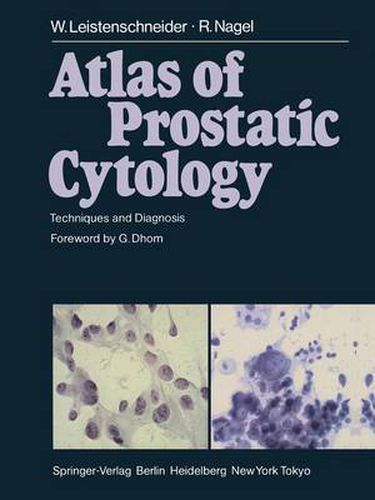Readings Newsletter
Become a Readings Member to make your shopping experience even easier.
Sign in or sign up for free!
You’re not far away from qualifying for FREE standard shipping within Australia
You’ve qualified for FREE standard shipping within Australia
The cart is loading…






This title is printed to order. This book may have been self-published. If so, we cannot guarantee the quality of the content. In the main most books will have gone through the editing process however some may not. We therefore suggest that you be aware of this before ordering this book. If in doubt check either the author or publisher’s details as we are unable to accept any returns unless they are faulty. Please contact us if you have any questions.
Diagnostic and exfoliative cytology has today achieved a status that few could have envisaged 20 years ago. While exfoliative cytology has long been employed in gynecological diagnosis, new and rewarding spheres have now developed in which cytological diagnosis plays an important role. Exfoliative cytology, for example, is widely employed as an aid in the continuous assessment of urinary tract tumors, and aspiration cytology in the diagnosis of thyroid dis eases. This has given rise to a growing demand for pathologists experienced in cytological diagnosis. However, clinicians with an interest in morphology were often the first to adopt these simple and safe methods, being naturally attracted by the chance to avoid conducting biopsy, which, in the last analysis, is nothing less than a surgical operation. In this Atlas of Prostatic Cytology Leistenschneider and Nagel expertly demonstrate what can be achieved when clinicians skilled in morphology take an interest in cytological methods. Not only do they have direct contact with the patient, but they also profit from immediately being in a position to assess the results of their diagnostic procedures by examining the specimen obtained. From the technical point of view aspiration biopsy of the prostate is by no means a simple procedure and the difficulties involved would seem to have been underestimated in the initial phase of enthusiastic acclaim. Consequently it has been not unusual for clinicians and pathologists to be disappointed by the high rate of unsatisfactory samples obtained by this method.
$9.00 standard shipping within Australia
FREE standard shipping within Australia for orders over $100.00
Express & International shipping calculated at checkout
This title is printed to order. This book may have been self-published. If so, we cannot guarantee the quality of the content. In the main most books will have gone through the editing process however some may not. We therefore suggest that you be aware of this before ordering this book. If in doubt check either the author or publisher’s details as we are unable to accept any returns unless they are faulty. Please contact us if you have any questions.
Diagnostic and exfoliative cytology has today achieved a status that few could have envisaged 20 years ago. While exfoliative cytology has long been employed in gynecological diagnosis, new and rewarding spheres have now developed in which cytological diagnosis plays an important role. Exfoliative cytology, for example, is widely employed as an aid in the continuous assessment of urinary tract tumors, and aspiration cytology in the diagnosis of thyroid dis eases. This has given rise to a growing demand for pathologists experienced in cytological diagnosis. However, clinicians with an interest in morphology were often the first to adopt these simple and safe methods, being naturally attracted by the chance to avoid conducting biopsy, which, in the last analysis, is nothing less than a surgical operation. In this Atlas of Prostatic Cytology Leistenschneider and Nagel expertly demonstrate what can be achieved when clinicians skilled in morphology take an interest in cytological methods. Not only do they have direct contact with the patient, but they also profit from immediately being in a position to assess the results of their diagnostic procedures by examining the specimen obtained. From the technical point of view aspiration biopsy of the prostate is by no means a simple procedure and the difficulties involved would seem to have been underestimated in the initial phase of enthusiastic acclaim. Consequently it has been not unusual for clinicians and pathologists to be disappointed by the high rate of unsatisfactory samples obtained by this method.